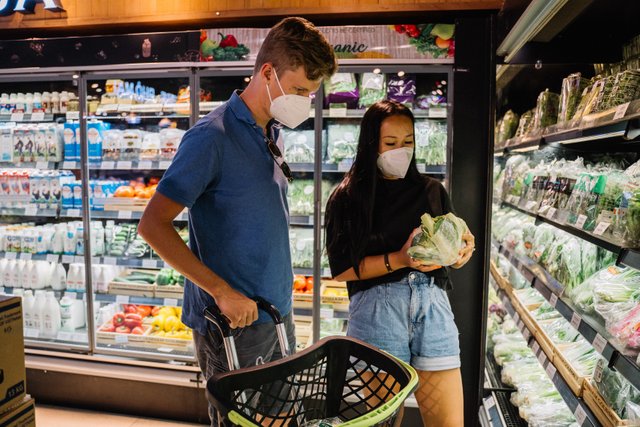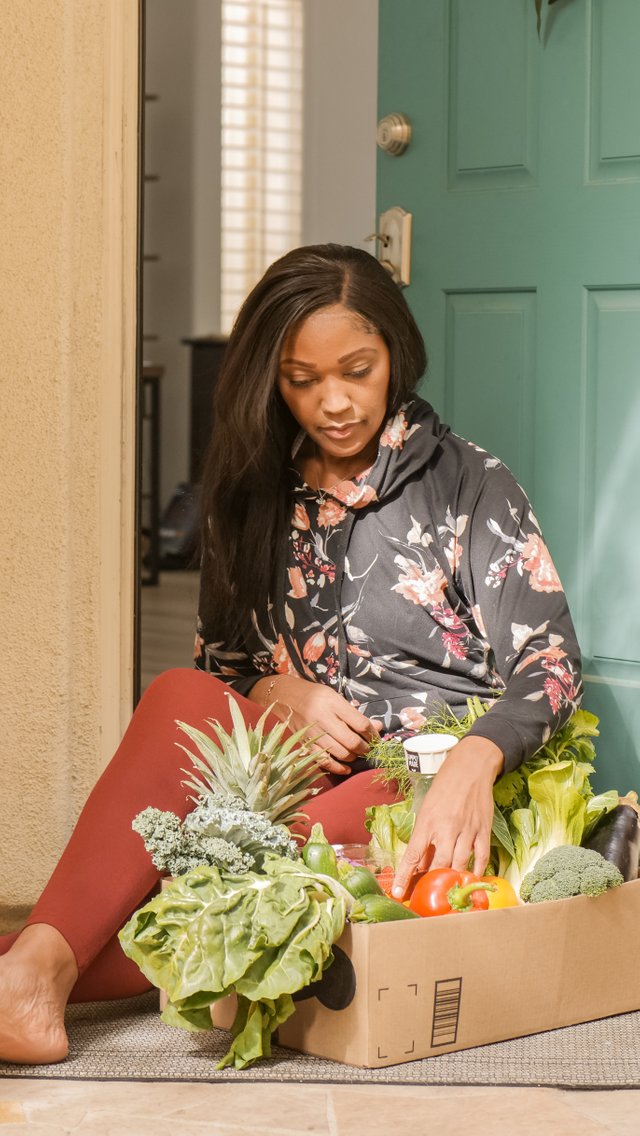Packaging Requirements For Fresh Fruits And Vegetables

Introduction
Packaging fresh fruits and vegetables are one of the more important steps in the long and complicated journey from grower to consumer. Bags, crates, hampers, baskets, cartons, bulk bins, and palletized containers are convenient containers for handling, transporting, and marketing fresh produce. More than 1,500 different types of packages are used for products in the U.S. and the number continues to increase as the industry introduces new packaging materials and concepts. Although the industry generally agrees that container standardization is one way to reduce cost, the trend in recent years has moved toward a wider range of package sizes to accommodate the diverse needs of wholesalers, consumers, foodservice buyers, and processing operations.
Packing and packaging materials contribute a significant cost to the produce industry; therefore it is important that packers, shippers, buyers, and consumers have a clear understanding of the wide range of packaging options available.

The Function of Packaging or Why package Produce?
A significant percentage of produce buyer and consumer complaints may be traced to container failure because of poor design or inappropriate selection and use. A properly designed produce container should contain, protect, and identify the produce, satisfying everyone from grower to consumer.
PACKAGING POINTS
Recyclability/Biodegradability.
A growing number of U.S. markets and many export markets have waste disposal restrictions for packaging materials. In the near future, almost all product packaging will be recyclable or biodegradable, or both. Many of the largest buyers of fresh produce are also those most concerned about environmental issues.
Variety.
The trend is toward greater use of bulk packages for processors and wholesale buyers and smaller packages for consumers. There are now more than 1,500 different sizes and styles of produce packages.
Sales Appeal. High-quality graphics are increasingly being used to boost sales appeal. Multi-color printing, distinctive lettering, and logos are now common.
Shelf Life.
Modern produce packaging can be custom engineered for each commodity to extend shelf life and reduce waste.
Containment
The container must enclose the produce in convenient units for handling and distribution. The produce should fit well inside the container, with little wasted space. Small produce items that are spherical or oblong (such as potatoes, onions, and apples) may be packaged efficiently utilizing a variety of different package shapes and sizes. However, many produce items such as asparagus, berries, or soft fruit may require containers specially designed for that item.
packages of produce commonly handled by hand are usually limited to 50 pounds. Bulk packages moved by forklifts may weigh as much as 1,200 pounds.
Protection
The package must protect the produce from mechanical damage and poor environmental conditions during handling and distribution. To produce buyers, torn, dented, or collapsed produce packages usually indicate a lack of care in handling the contents. Produce containers must be sturdy enough to resist damage during packaging, storage, and transportation to market.
Because almost all produce packages are palletized, produce containers should have sufficient stacking strength to resist crushing in a low temperature, high humidity environment. Although the cost of packaging materials has escalated sharply in recent years, poor quality, lightweight containers that are easily damaged by handling or moisture are no longer tolerated by packers or buyers.
Damage resulting from poor environmental control during handling and transit is one of the leading causes of rejected produce and low buyer and consumer satisfaction. Each fresh fruit and vegetable commodity has its own requirements for temperature, humidity, and environmental gas composition.
Produce containers should be produced friendly – helping to maintain an optimum environment for the longest shelf life. This may include special materials to slow the loss of water from the produce, insulation materials to keep out the heat, or engineered plastic liners that maintain a favorable mix of oxygen and carbon dioxide.
Identification
The package must identify and provide useful information about the produce. It is customary (and may be required in some cases) to provide information such as the product name, brand, size, grade, variety, net weight, count, grower, shipper, and country of origin. It is also becoming more common to find included on the package, nutritional information, recipes, and other useful information directed specifically at the consumer. In consumer marketing, pack-age appearance has also become an important part of the point of sale displays.
Universal Product Codes (UPC or bar codes) may be included as part of the labeling. The UPCs used in the food industry consists of a ten-digit machine-readable code. The first five digits are a number assigned to the specific producer (packer or shipper) and the second five digits represent specific product information such as type of produce and size of the package. Although no price information is included, UPCs are used more and more by packers, shippers, buyers, and Example UPC retailers as a fast and convenient method of inventory control and cost accounting. Efficient use of UPCs requires coordination with everyone who handles the package.
Types of Packaging Materials
Wood
Pallets literally form the base on which most fresh produce is delivered to the consumer. Pallets were first used during World War II as an efficient way to move goods. The produce industry uses approximately 190 of the 700 million pallets produced per year in the U.S... About 40 percent of these are single-use pallets. Because many are of a non-standard size, the pallets are built as inexpensively as possible and discarded after a single-use. Although standardization efforts have been slowly underway for many years, the efforts have been accelerated by pressure from environmental groups, in addition to the rising cost of pallets and landfill tipping fees.
Over the years, the 40-inch wide, by 48-inch long pallet has evolved as the unofficial standard size. Standardization encourages re-use, which has many benefits. Besides reducing cost because they may be used many times, most pallet racks and automated pallet handling equipment are designed for standard-size pallets. Standard size pallets make efficient use of truck and van space and can accommodate heavier loads and more stress than lighter single-use pallets. Additionally, the use of a single pallet size could substantially reduce pallet inventory and warehousing costs along with pallet repair and disposal costs. The adoption of a pallet standard throughout the produce industry would also aid efforts toward the standardization of produce containers.
Slipsheets are considerably less expensive than pallets to buy, store, and maintain; they may be re-used many times, and they reduce the tare weight of the load. However, they require the use of a special fork-lift attachment at each handling point from the packer to the retailer.
Depending on the size of the product package, a single pallet may carry from 20 to over 100 individual packages. Because these packages are often loosely stacked to allow for air circulation or are bulging and difficult to stack evenly, they must be secured (unitized) to prevent shifting during handling and transit. Although widely used, plastic straps and tapes may not have completely satisfactory results. Plastic or paper corner tabs should always be used to prevent the straps from crushing the corners of packages.
Plastic stretch film is also widely used to secure produce packages. A good film must stretch, retain its elasticity, and cling to the packages. The plastic film may conform easily to various size loads. It helps protect the packages from loss of moisture, makes the pallet more secure against pilferage, and can be applied using partial automation. However, plastic film severely restricts proper ventilation. A common alternative to stretch film is plastic netting, which is much better for stabilizing some pallet loads, such as those that require forced-air cooling. Used stretch film and plastic netting may be difficult to properly handle and recycle.
A very low-cost and almost fully automated method of pallet stabilization is the application of a small amount of special glue to the top of each package.
As the packages are stacked, the glue secures all cartons together. This glue has a low tensile strength so cartons may be easily separated or repositioned, but a high shear strength so they will not slide. The glue does not present disposal or recycling problems.
Pallet Bins. Substantial wooden pallet bins of milled lumber or. plywood is primarily used to move products from the field or orchard to the packing house. Depending on the application, capacities may range from 12 to more than 50 bushels. Although the height may vary, the length and width are generally the same as a standard pallet (48 inches by 40 inches). More efficient double-wide pallet bins (48 inches by 80 inches) are becoming more common in some production operations.
Most pallet bins are locally made; therefore it is very important that they be consistent from lot to lot in materials, construction, and especially size. For example, small differences in overall dimensions Pallet bin can add up to big problems when several hundred are stacked together for cooling, ventilation, or storage. It is also important that stress points be adequately reinforced.
The average life of a hardwood pallet bin that is stored outside is approximately five years. When properly protected from the weather, pallet bins may have a useful life of 10 years or more.
Uniform voluntary standards for wood pallets and other wood containers are administered by the National Wooden Pallet and Container Association, Washington, DC. Additionally, the American Society of Agricultural Engineers, St. Joseph, Michigan, publishes standards for agricultural pallet bins (ASAE S337.1).
Wire-bound crates come in many different sizes from half-bushel to pallet-bin size and have a great deal of open space to facilitate cooling and ventilation. Although few are re-used, wire-bound crates may be dissembled after use and shipped back to the packer (flat). In some areas, used containers may pose a significant disposal problem. Wirebound crates are not generally acceptable for consumer packaging because of the difficulty in affixing suitable labels.
Wooden Crates and Lugs. Wooden crates, once extensively used for apples, stone fruit, and potatoes have been almost totally replaced by other types of containers. The relative expense of the container, a greater concern for tare weight, and advances in material handling have reduced their use to a few specialty items, such as expensive tropical fruit. The 15-, 20-, and 25-pound wooden lugs still used for bunch grapes, and some specialty crops are being gradually replaced with less costly alternatives.

Wooden Baskets and Hampers. Wire-reinforced wood veneer baskets and hampers of different sizes were once used for a wide variety of crops from strawberries to sweet potatoes. They are durable and may be nested for efficient transport when empty. However, cost, disposal problems, and difficulty in efficient palletization have severely limited their use to mostly local grower markets where they may be re-used many times.
Corrugated Fiberboard
Corrugated fiberboard (often mistakenly called cardboard or pasteboard) is manufactured in many different styles and weights. Because of its relativity low cost and versatility, it is the dominant produce container material and will probably remain so in the near future. The strength and serviceability of corrugated fiberboard have been improving in recent years.
Most corrugated fiberboard is made from three or more layers of paperboard manufactured by the kraft process. To be considered paperboard, the paper must be thicker than 0.008 inches. The grades of paperboard are differentiated by their weight (in pounds per 1,000 square feet) and their thickness. Kraft paper made from unbleached pulp has a characteristic brown color and is exceptionally strong. In addition to virgin wood fibers, Kraft paper may have some portion of synthetic fibers for additional strength, sizing (starch), and other materials to give it wet strength and printability.
Most fiberboard contains some recycled fibers. Minimum amounts of recycled materials may be specified by law and the percentage is expected to increase in the future. Tests have shown that cartons of fully recycled pulp have about 75 percent of the stacking strength of virgin fiber containers. The use of recycled fibers will inevitably lead to the use of thicker-walled containers.
Double-faced corrugated fiberboard is the predominant form used for produce containers. It is produced by sandwiching a layer of corrugated paperboard between an inner and outer liner (facing) of paper-board. The inner and outer liner may be identical, or the outer layer may be preprinted or coated to better accept printing. The inner layer may be given a special coating to resist moisture. Heavy-duty shipping containers, such as corrugated bulk bins that are required to have high stacking strength, may have double- or even triple-wall construction. Corrugated fiberboard manufacturers print box certificates on the bottom of containers to certify certain strength characteristics and limitations. There are two types of certification. The first certifies the minimum combined weight of both the inner and outer facings and that the corrugated fiberboard material is of minimum bursting strength. The second certifies minimum edge crush test (ETC) strength. Edge crush strength is a much better predictor of stacking strength than is bursting strength. For this reason, users of corrugated fiberboard containers should insist on ECT certification to compare the stackability of various containers. Both certificates give a maximum size limit for the container (sum of length, width, and height) and the maximum gross weight of the contents.
Waxed fiberboard cartons (the wax is about 20 percent of fiber weight) are used for many produce items that must be either hydro cooled or iced. The main objection to wax cartons is disposal after use